This page contains affiliate links. Please read our disclosure for more info.
Before we planned our trip to the Maldives all we knew was that it is the classic honeymoon destination—white powdery beaches, turquoise lagoons, and luxurious over-water bungalows. All those are true, but as we dug deeper we learned that the country has a fascinating culture and history.
1) The Maldives is a group of 1,192 coral islands in 26 atolls located in the Indian Ocean southwest of India and Sri Lanka.
2) 187 islands are inhabited and over 100 are resort islands.
3) 99% of the country is sea. Exploring underwater is a highlight with some of the best snorkelling and diving in the world. We saw dolphins, stingrays, sharks, turtles, triggerfish, and much more. We’d love to return to see whale sharks.
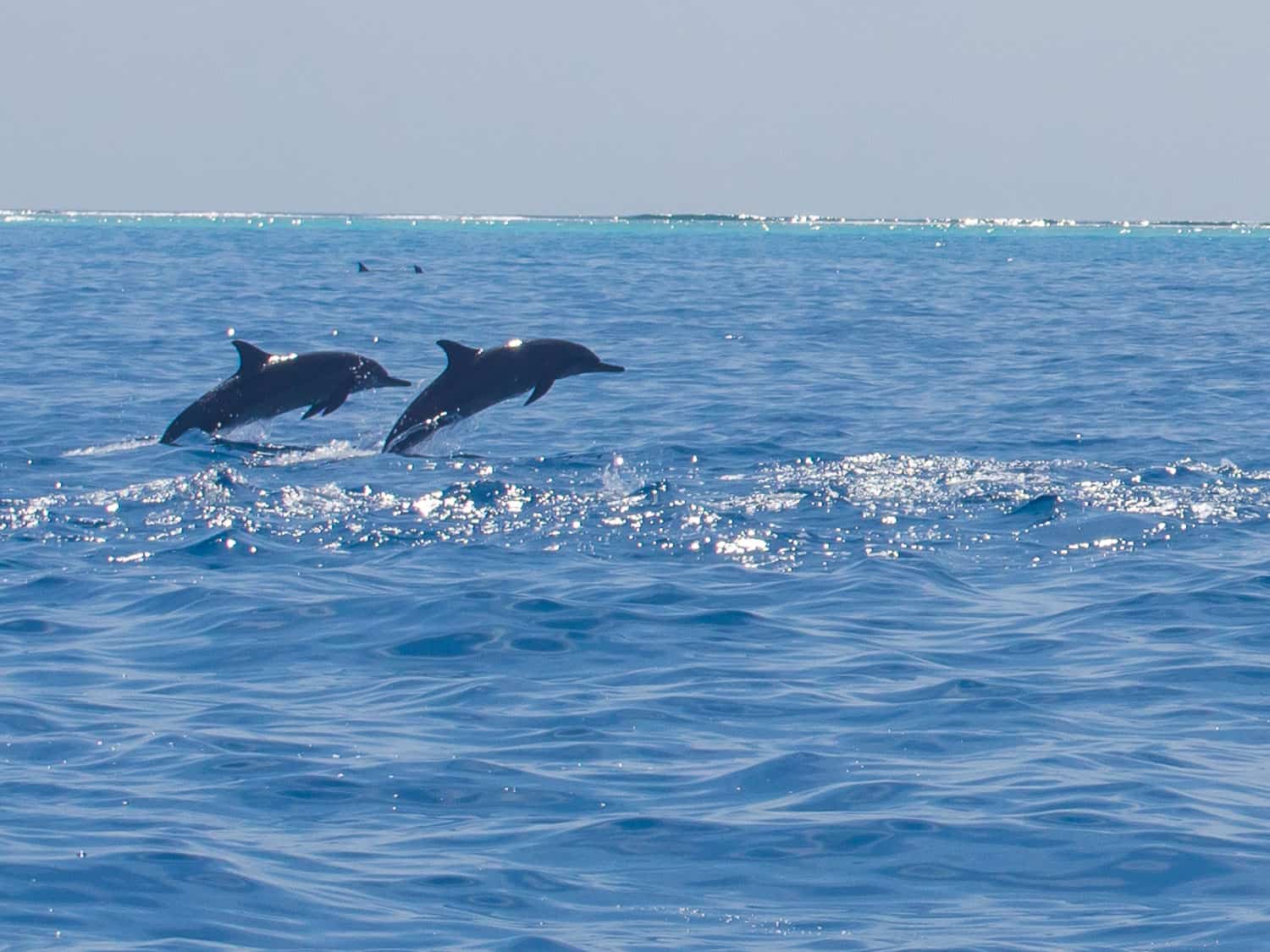
4) Most of the islands are tiny. The capital Malé is only 5.8 km2 and is one of the most densely populated places on earth—a third of the country’s population lives there.
5) A major land reclamation project has built on the reef near Malé to create Hulhumale, an artificial island to deal with the overflow.
6) The Maldives is one of the lowest-lying countries in the world—its highest natural point (Mount Villingili) stands at just 5.1m, the lowest of any country in the world. The Maldives is vulnerable to rising sea levels and its future is a serious concern.
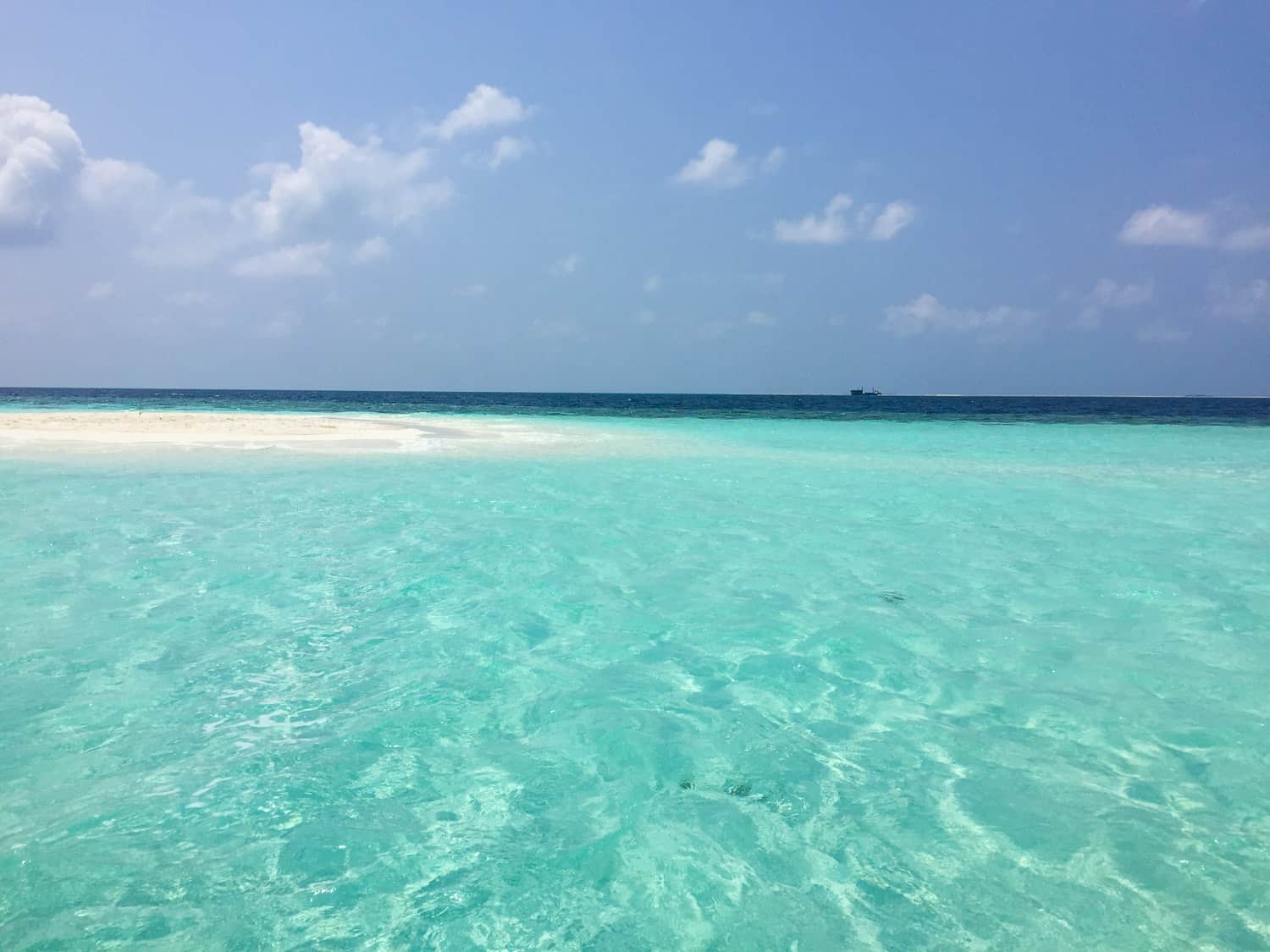
7) The Maldivian population is 100% Muslim. Alcohol, pork, dogs, pornography, and idols of worship are not allowed to be brought into the country.
8) Every island has a mosque, which broadcasts the call to prayer five times a day. Many shops close for 15 minutes at these times to allow staff to pray.
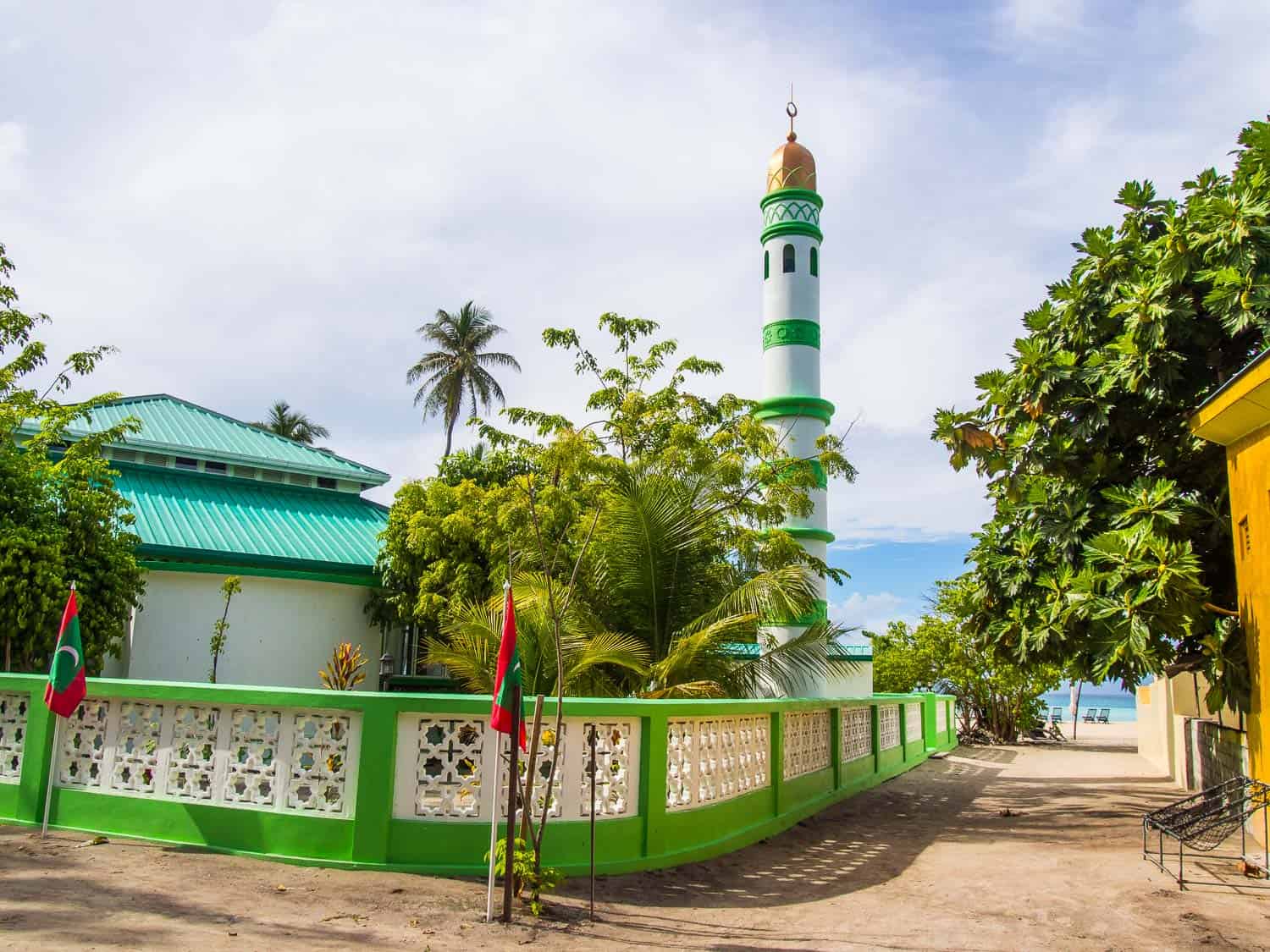
9) The islands opened to tourism in the 1970s, but tourists were kept separate from the local population and could only stay on uninhabited resort islands, where the locals wouldn’t be offended by their alcohol drinking and bikini wearing.
10) The Maldives has some of the most luxurious resorts in the world.
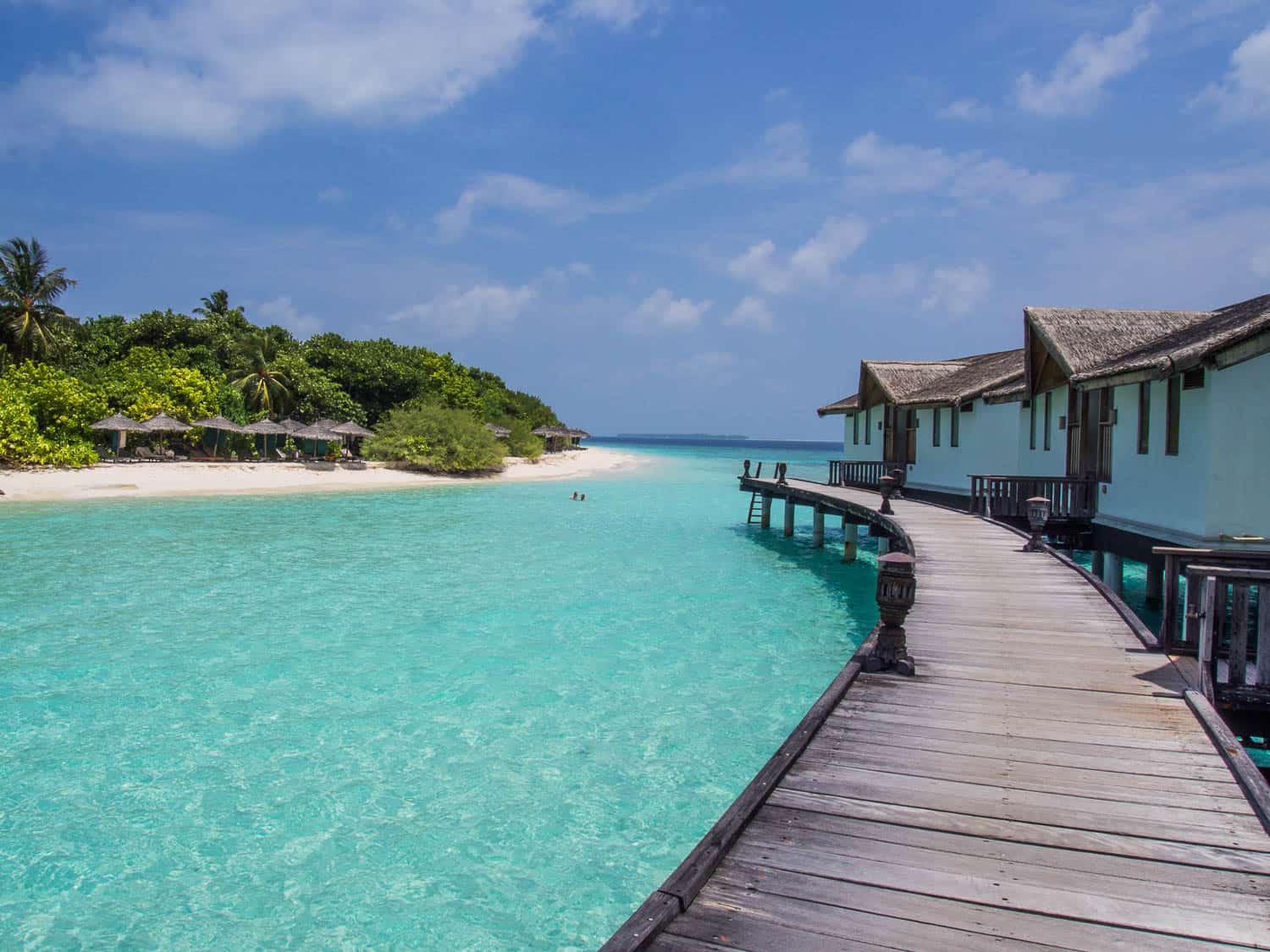
11) And the best beaches.
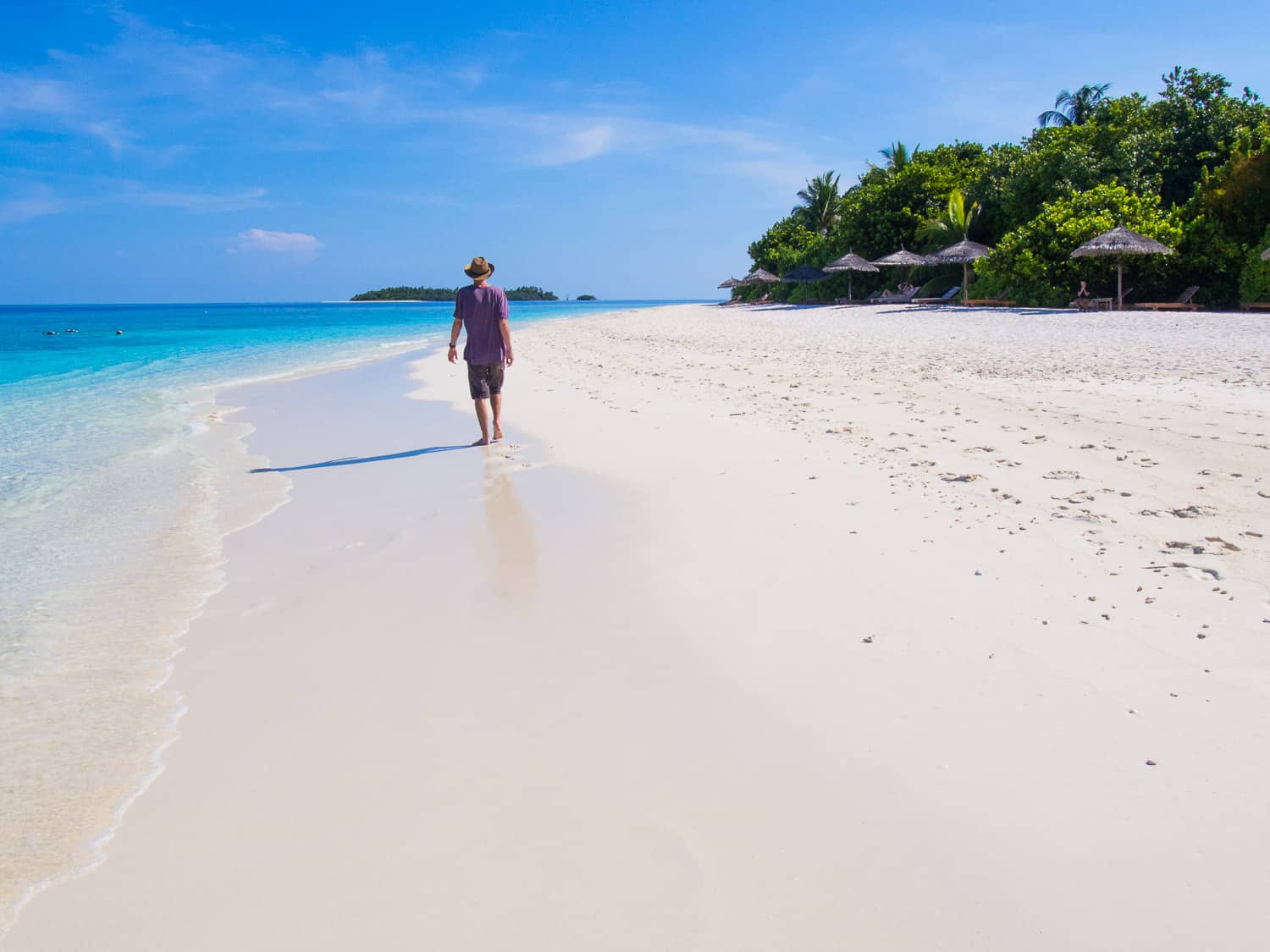
12) The sand is made from coral and doesn’t get hot, so it’s comfortable to walk on at any time of day.
13) The Maldives were run by dictator Maumoon Abdul Gayoom for 30 years until 2008 when Mohamed Nasheed became the country’s first democratically elected president.
14) Nasheed made many progressive changes during his four-year term including introducing a national tax system (Maldivians didn’t pay tax until 2012!), public healthcare, a state pension, and a national ferry network.
15) He also held the world’s first underwater cabinet meeting to highlight the effects of global warming and rising sea levels on the country.
16) In 2009, Nasheed lifted travel restrictions on foreigners and allowed guesthouses to be built on inhabited islands. This allowed independent travellers to visit the country on a budget for the first time.
17) Following a coup in 2012, Nasheed lost power and the presidency went to Abdulla Yameen, the half-brother of the former dictator Gayoom. Nasheed was later imprisoned on terrorism charges. Amnesty International says that his trial was flawed and his conviction unsound.
18) On local islands alcohol is not allowed and women can’t wear bikinis, except on designated “bikini beaches”. Local women swim fully clothed.
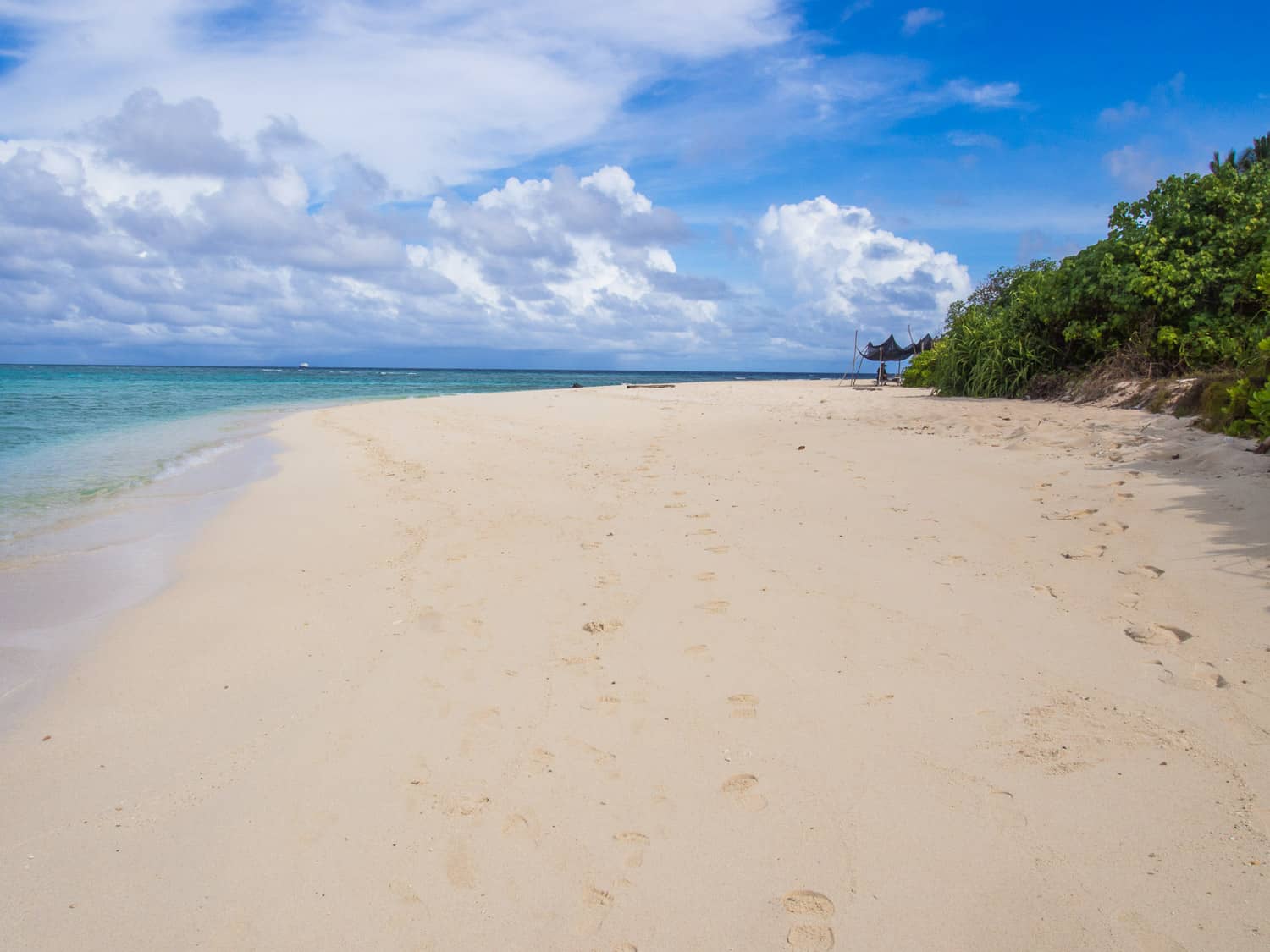
19) Fresh water is produced in desalination plants from sea water.
20) The Maldivian Coca-Cola factory is the only one in the world where the drink is made from desalinated water.
21) You can call Maldivians by their first or last name. Many men are called Mohammed, Hassan or Ali, so using their surname is often easier.
22) There are very few roads outside Malé. Two of the islands we visited had no motorised transport.
23) The traditional, hand-crafted fishing boat called the dhoni is the main method of transporting people and goods between islands.
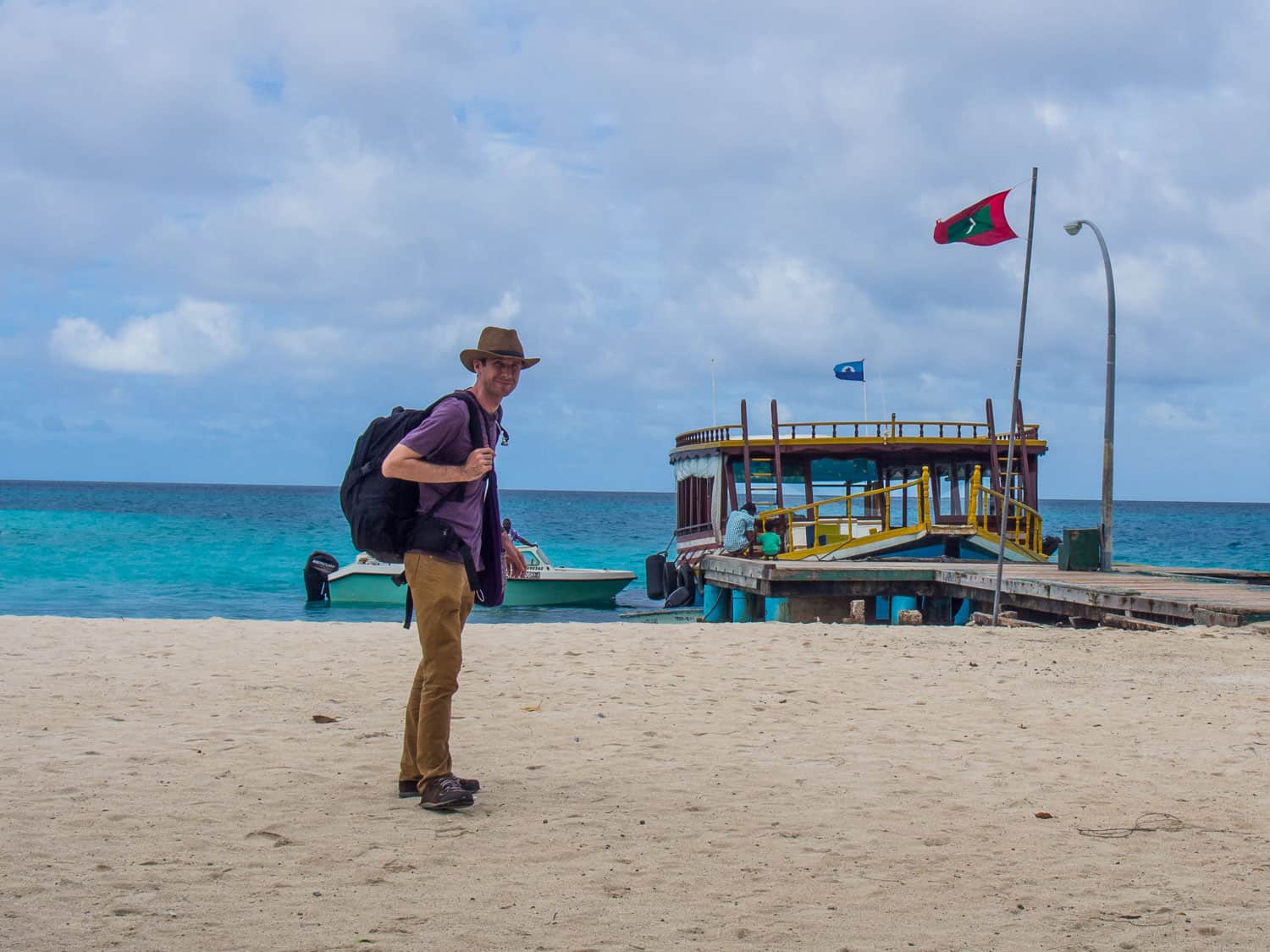
24) The Maldives has one of the two airports in the world that operate both international and seaplane flights (the other is Vancouver).
25) Seaplanes are a remarkable way to travel—the sea is the runway! The views are spectacular.
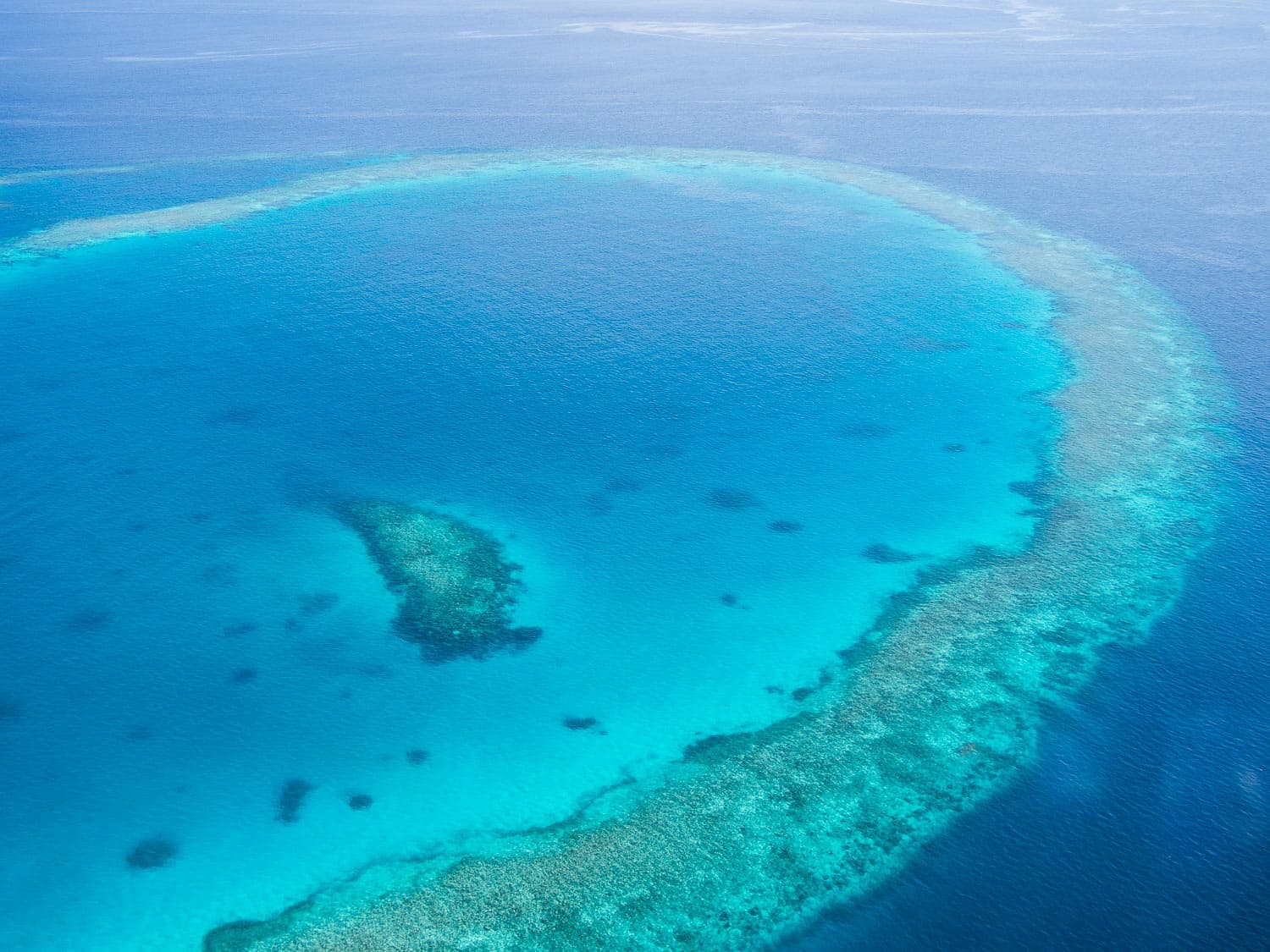
26) Seaplane pilots wear shorts and flip-flops (or bare feet).
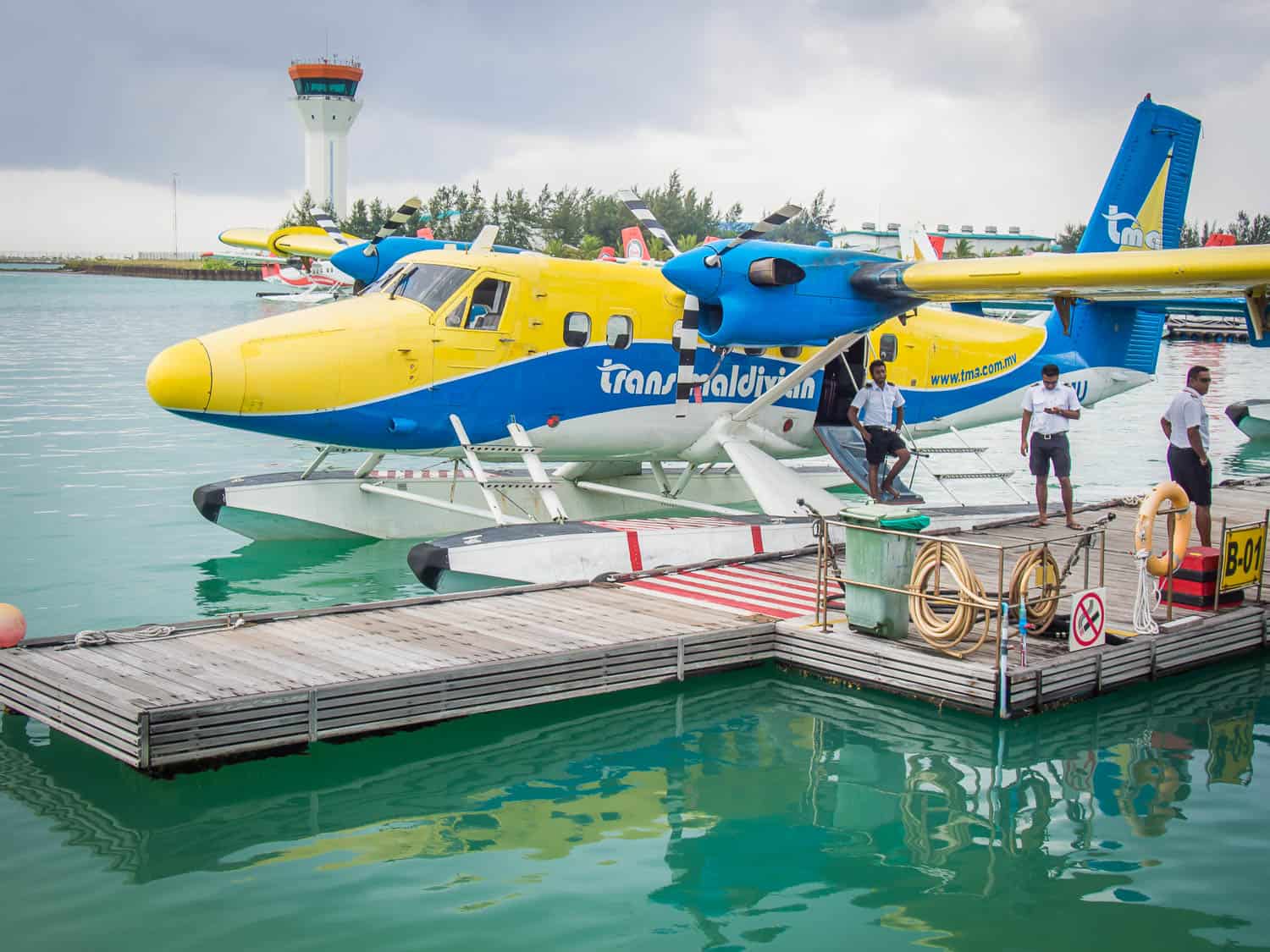
27) As it isn’t possible to grow much produce on the sandy islands, fish and coconuts are the main food sources (along with imported food).
28) The traditional Maldivian breakfast mas huni is one of the tastiest in the world. Our guesthouse made us a vegetarian version with potatoes or pumpkin instead of tuna. It’s mixed with grated fresh coconut, onion, chile, and lime and served with roshi flatbreads. Delicious!
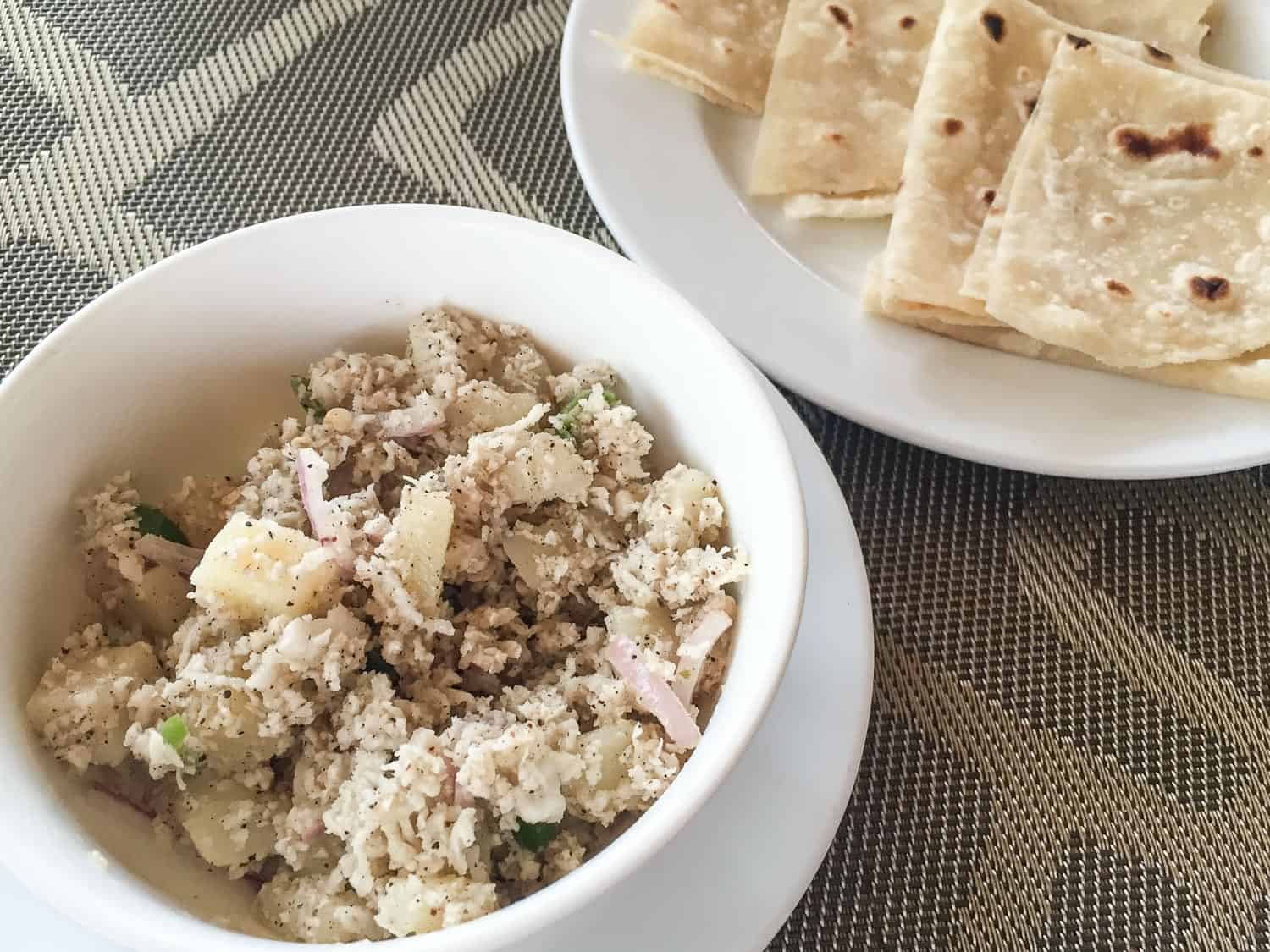
29) Many of the resort islands have their own time zones—usually one hour ahead of Malé time. This gives guests the illusion of extra daylight in the evening and allows a longer lie-in.
30) Maldivian money is pretty and colourful.
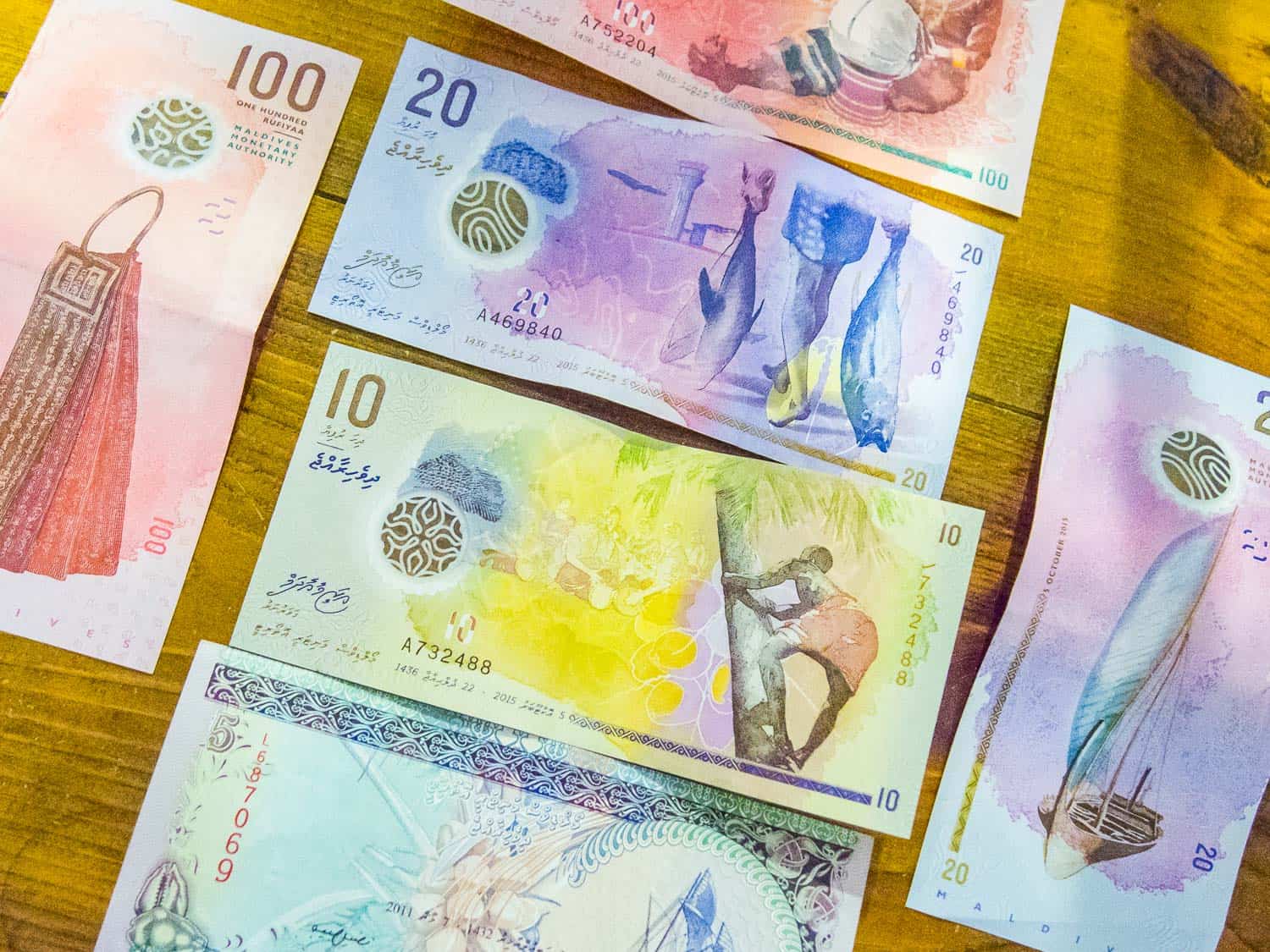
31) The Maldivian version of the park bench is the jolie, a row of chairs made of metal poles and netting. They are everywhere—in homes and public spaces.
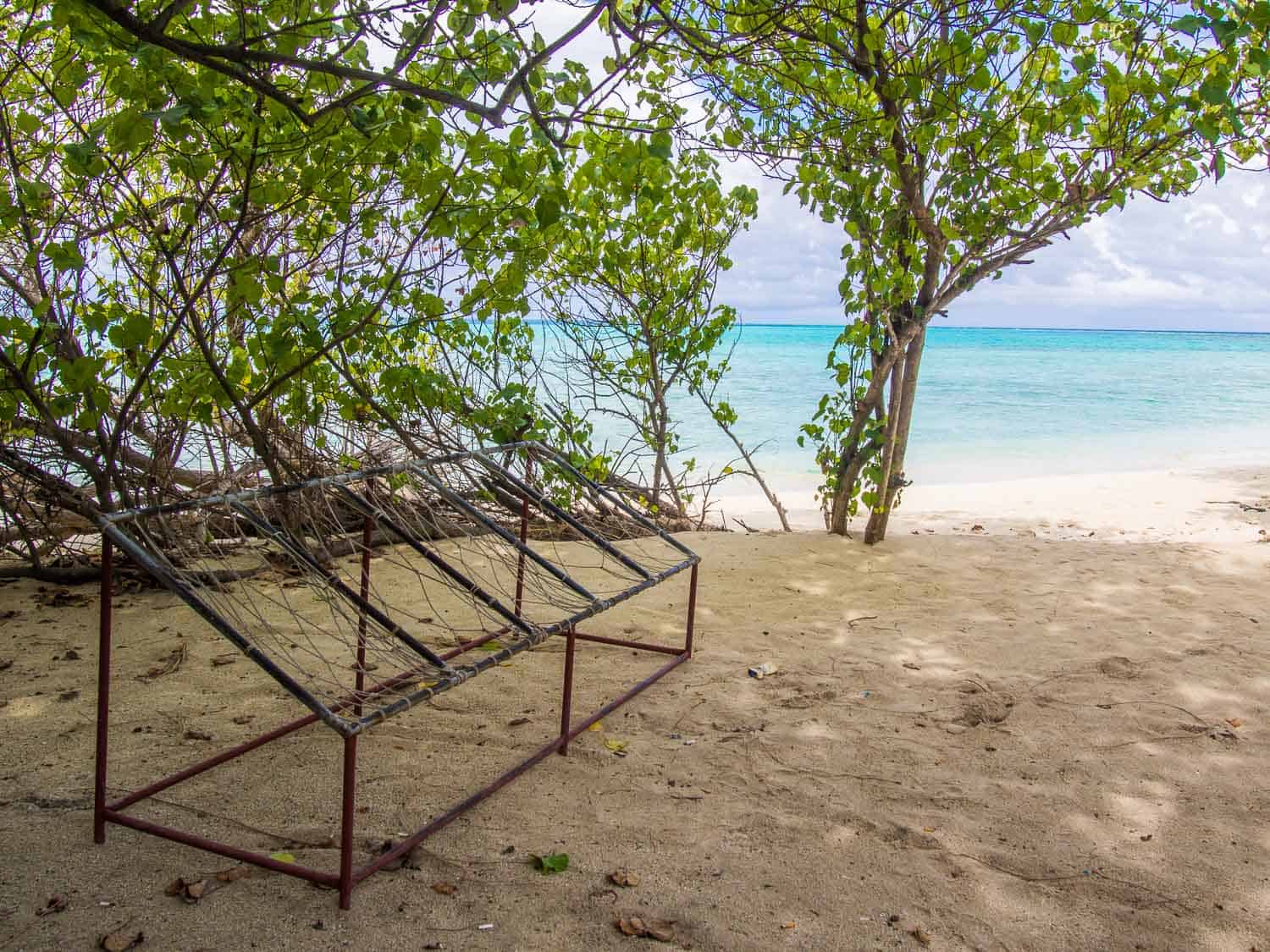
32) They also have a unique hammock where you sit upright—all the better for chatting and enjoying the view.
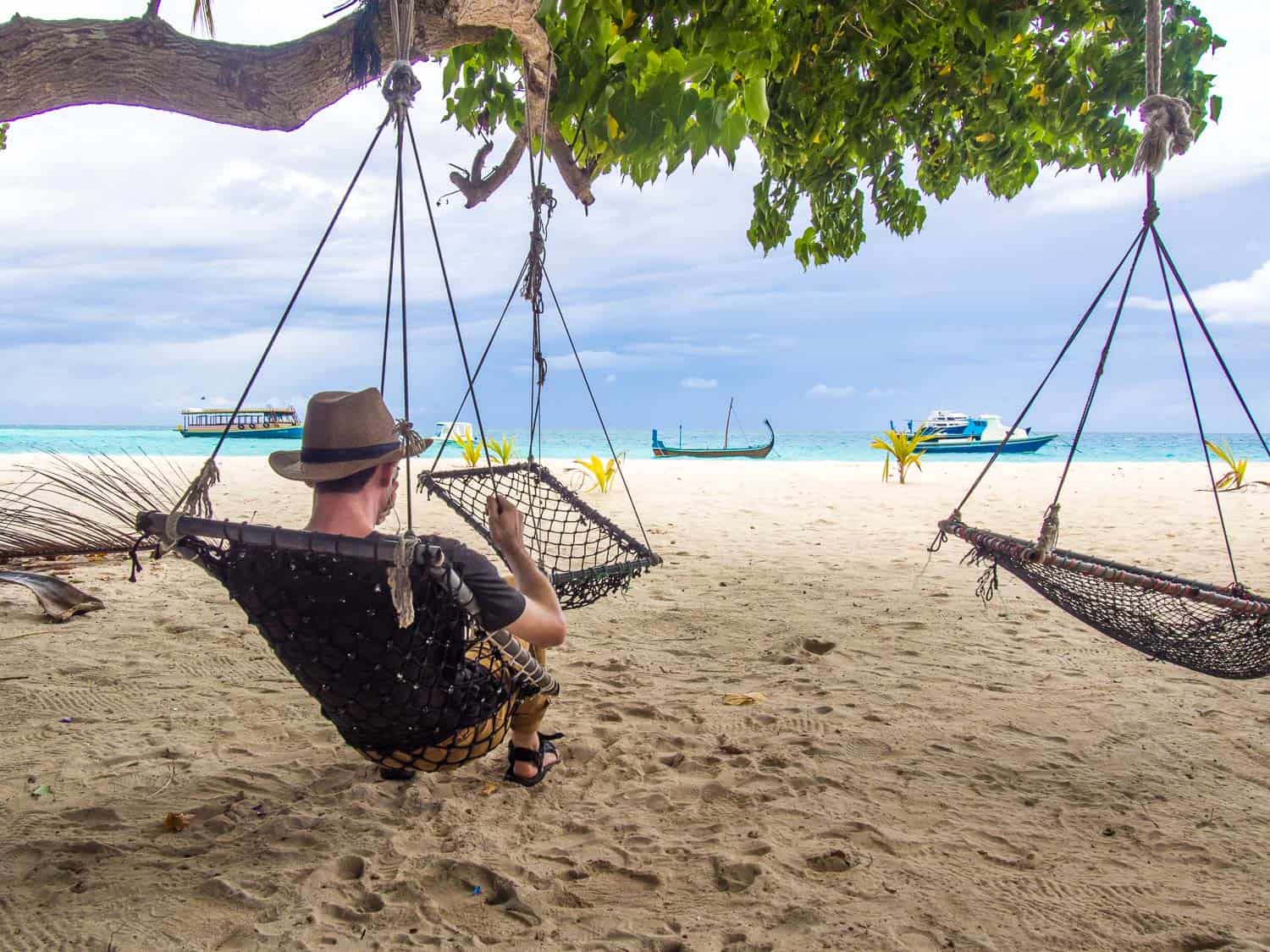
We absolutely loved our two weeks island hopping in the Maldives to both inhabited islands and a resort. It’s one of the most relaxing and beautiful places we’ve ever visited.
If you enjoyed this post, pin it!
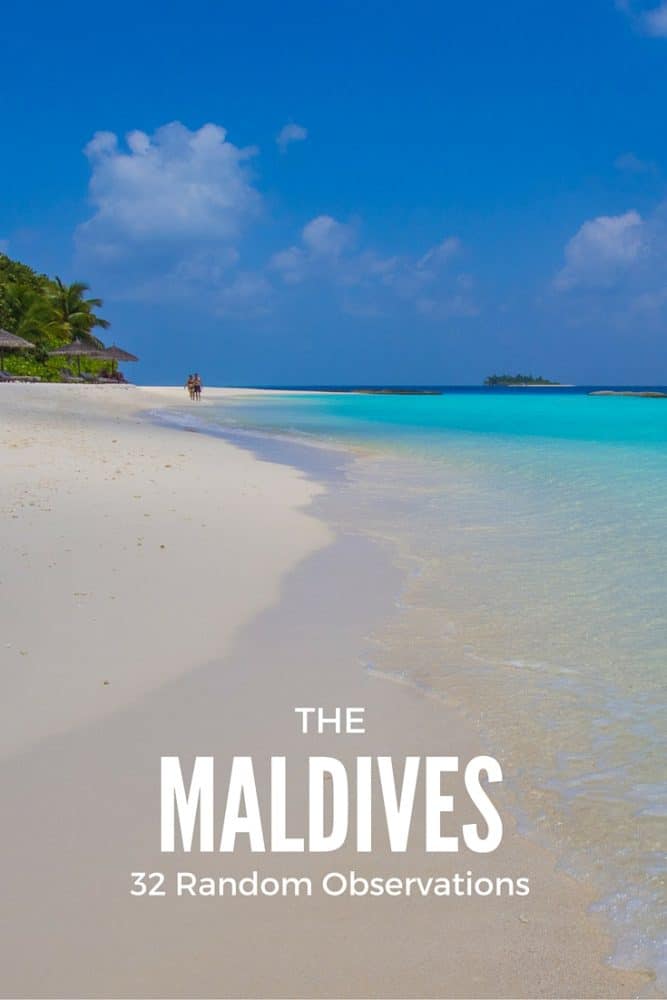
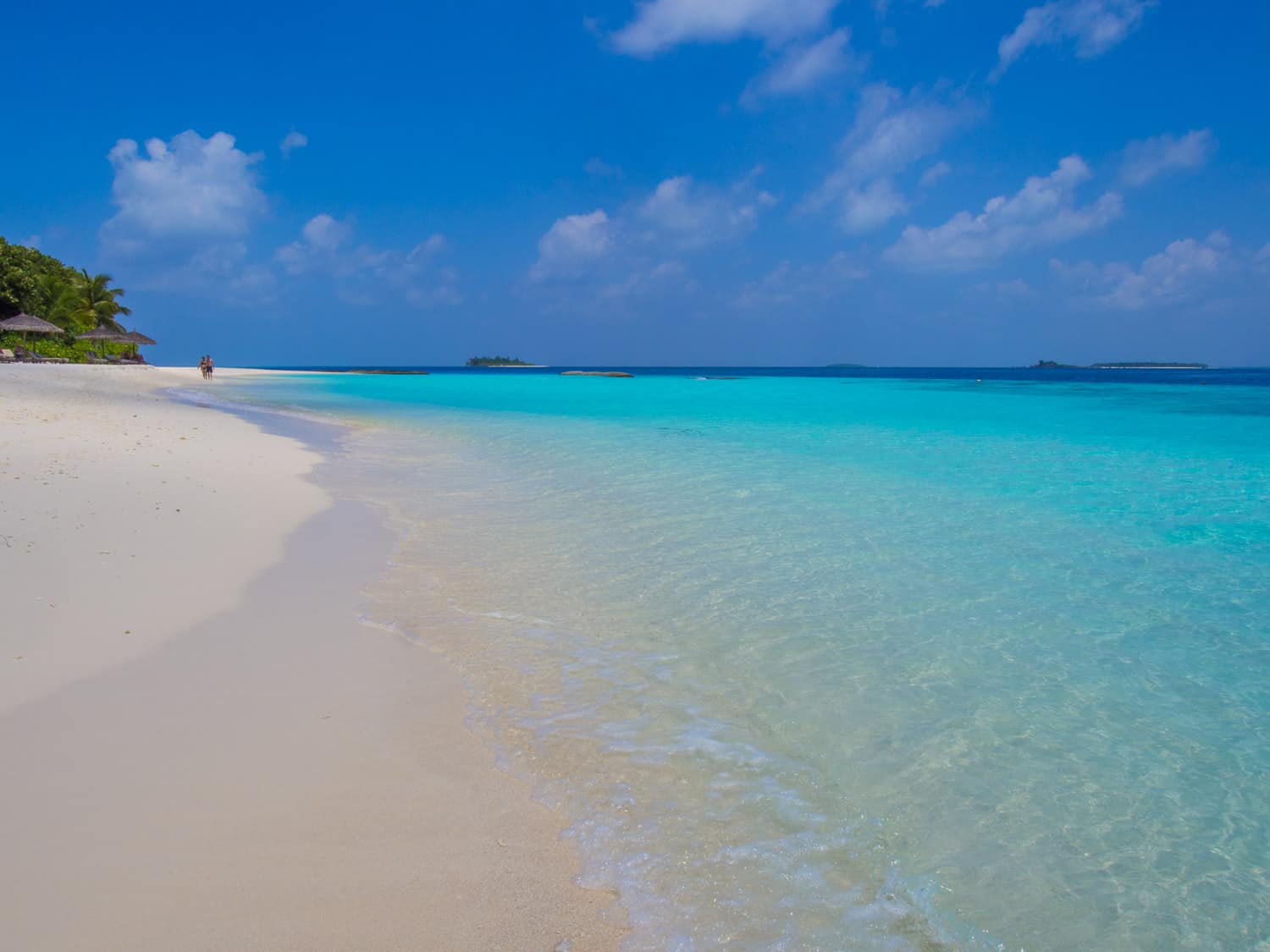
How interesting I’m thinking of taking my mum here next year but the thought of loads of honeymooners is putting me off.
I wouldn’t let that put you off. There are lots of couples, but we also saw plenty of families and friends. In fact, the only other tourists on Fulidhoo were a mother and daughter.
Awesome, I liked 12,19 and 20!
28, how does this affect vegetarians/vegans? Although I’d be happy to eat/drink coconut all day every day!
We found it easy to be vegetarian. We mostly ate at our guesthouses, which always had a veggie curry on the menu.
Wow, it looks beautiful. Nearly ever single photo has the ocean in it!
We were never far from the ocean!
What a gorgeous place! Not fond of the no dogs rule :) since we travel with our lab but such beauty. And the traditional breakfast has my taste buds going.
Not a place for dogs sadly, but it is one of the most beautiful places we’ve visited.
Yes, the no dogs rule is a bit annoying, but for that beach I will definitely leave Rudy home :)
I’m actually fine with it cuz their religion doesn’t allow dogs. So I respect it, and you should too.